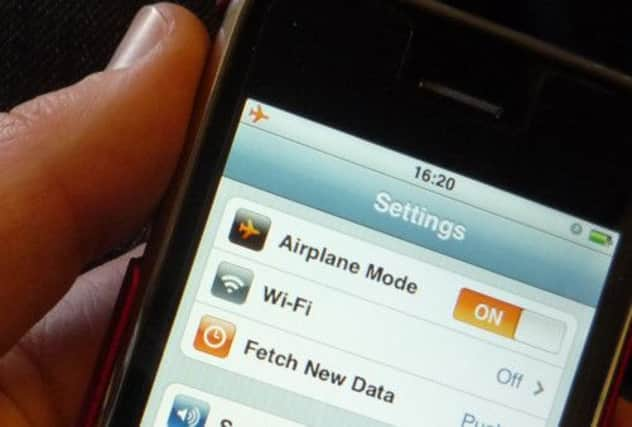iPhone sent US plane off course, pilot claims


News of the incident, which was reported to safety authorities, comes four years after The Scotsman revealed that a mobile phone had been blamed by flight crew for altering the course of a jumbo jet.
Mobile phone use is banned on many flights because, even when left switched on, the handsets send out stronger and stronger signals as they search for a network to connect to.
Advertisement
Hide AdAdvertisement
Hide AdThis has been shown to interfere with aircraft equipment, but there have been no proven cases of it altering a plane’s course.
In the latest case, which happened in the United States in 2011, the aircraft went four miles off course while climbing at around 9,000ft.
The problem was reported to have stopped after cabin crew persuaded one of the 12 passengers on board, seated in row nine, to switch off their iPhone, which had been left on. The plane landed safely.
In a report sent to the Nasa’s aviation safety reporting system, the aircraft’s co-pilot stated: “In my opinion, and past experience, the cellphone being on and trying to reconnect to towers on the ground, along with the location of row nine to the instrumentation in the wing, caused our heading to wander.
“The timing of the cellphone being turned off coincided with the moment where our heading problem was solved.”
In a previous case, reported by The Scotsman, the Civil Aviation Authority (CAA) said the speed and direction of a Boeing 747 had been changed by a passenger using a phone after the aircraft took off from Miami in 2008.
A CAA report said the pilots were forced to change the controls after the plane’s speed and direction changed three times.
It stated: “During climb, pilot intervention was required on three occasions to prevent speed exceedance and to ensure correct tracking after the aircraft turned right when a ‘direct to’ command required a left turn.
Advertisement
Hide AdAdvertisement
Hide Ad“A passenger on the upper deck was observed using a mobile phone and very reluctant to turn it off. The crew ... suspect that its use was the probable cause of the control problems.”
The CAA said today that only a handful of incidents were reported every six to eight months.
These involved anecdotal evidence from pilots of interference they believed was from mobile phones.
Studies have shown that as many as one in three passengers have accidentally left a device on during take-off or landing, but the CAA said passengers were “generally compliant”.
A CAA spokesman said: “Scientific research has shown mobile phones can interfere with the normal operation of aircraft equipment and can also cause interference in pilot’s headsets.
“Therefore the use of mobile phones onboard aircraft to make voice calls or send texts is strictly prohibited on all UK airlines, unless the aircraft has been especially equipped with an approved mobile phone control system.
“Passengers should always assume they cannot make voice calls or send texts on board their aircraft at any stage of their flight unless informed otherwise.”
The spokesman said most airlines permitted smartphones to be used only when aircraft were at cruising altitude, with the device in non-transmitting “flight mode”, which disabled its phone call, texting and web browsing functions.
Advertisement
Hide AdAdvertisement
Hide AdIn 2008, Emirates became the first airline to equip an aircraft to enable passengers to make calls on their phones.
However, many airlines restrict passengers to using such devices in “flight mode”, or with inflight wifi to access the internet and send e-mails, such as Norwegian Air Shuttle.